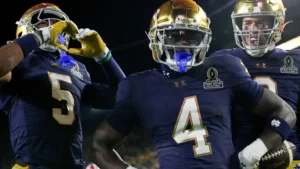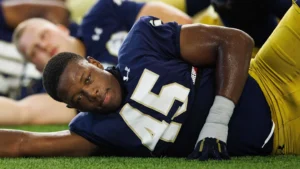
The landscape of sports has evolved significantly in the past two decades, with increasing visibility for women in various athletic fields. One of the most notable developments in this period has been the rising interest and participation of women in basketball. Since 2019, women’s interest in basketball has grown by 16%, a significant figure that speaks volumes about the shifting dynamics in sports culture and society. This surge in interest can be attributed to several key factors, including media representation, social media engagement, grassroots initiatives, and a general cultural shift towards greater gender equality in sports.
1. Increased Media Coverage and Broadcasting
One of the most influential factors in the rise of women’s interest in basketball has been the increased media coverage and broadcasting opportunities for female athletes. In the past, women’s sports, particularly basketball, received limited attention compared to their male counterparts. However, since 2019, there has been a marked improvement in the visibility of women’s basketball on television, social media platforms, and streaming services.
The success of leagues like the WNBA (Women’s National Basketball Association) has been instrumental in bringing women’s basketball into the mainstream. Networks like ESPN, NBC Sports, and CBS have increased their broadcast hours dedicated to women’s sports, including basketball. This is crucial for not only increasing viewership but also for encouraging young girls to pursue the sport. The 2020 and 2021 WNBA seasons, for example, attracted record-breaking viewership numbers, with the 2020 WNBA Finals drawing an average of 430,000 viewers, a significant jump from previous seasons.
These broadcasts not only showcase the incredible talent and skill of female basketball players but also serve as a source of inspiration for many girls and women who might have previously overlooked basketball as a viable career or pastime.
2. Social Media and Digital Engagement
Social media has become a powerful tool in the promotion and engagement of women’s sports. Platforms like Instagram, Twitter, and TikTok have given female athletes a direct and unmediated route to connect with their fans and the broader public. Athletes like Sabrina Ionescu, Breanna Stewart, and Diana Taurasi, to name a few, have cultivated massive followings on these platforms. Their online presence has been pivotal in spreading awareness about women’s basketball and has created a more inclusive and diverse basketball community.
The hashtag #WomensBasketball, for example, has been used widely to promote events, highlight players’ performances, and share personal stories, all contributing to the growing interest in the sport. Beyond that, social media enables real-time engagement with games, behind-the-scenes content, and conversations surrounding the sport. This has helped to humanize the players and create a deeper emotional connection between fans and the athletes they support.
Moreover, platforms like YouTube and Instagram have allowed grassroots organizations and independent creators to showcase women’s basketball highlights, gameplay tutorials, and personal player stories. This has broadened access to women’s basketball content and made it easier for fans to engage, irrespective of geographical barriers.
3. The Impact of International Success
The rise in women’s basketball interest is not confined to the United States alone. International competitions, such as the FIBA Women’s Basketball World Cup, have contributed significantly to the sport’s popularity. The U.S. women’s basketball team has dominated global competitions for years, with iconic players like Sue Bird, Maya Moore, and Tamika Catchings achieving legendary status.
The visibility of international players has expanded the sport’s reach. Countries such as Australia, Spain, and France have established strong women’s basketball programs, producing top-tier athletes who compete at the highest levels of international competition. The success of these players, combined with the international exchange of talent and strategies, has further fueled interest in the sport globally.
For example, the success of players like Liz Cambage (Australia) and Alina Iagupova (Ukraine) has introduced basketball fans worldwide to the talent and competitiveness present in women’s basketball, which may have otherwise been overshadowed by male athletes. The increased participation of women in international tournaments not only boosts the sport’s visibility but also highlights the universal appeal of basketball, regardless of gender.
4. Rise in Youth Basketball Participation
Grassroots participation in women’s basketball has also experienced a notable increase since 2019. More young girls are taking up the sport, which is essential for ensuring sustained growth in the future. According to recent studies, the number of girls playing basketball at the youth level has steadily increased. This rise can be attributed to several factors, including changes in school programs, youth organizations, and an increase in female-specific basketball leagues.
Leagues like the Amateur Athletic Union (AAU) and programs in schools have made it easier for girls to participate in organized basketball. Furthermore, the increasing popularity of the WNBA and women’s college basketball has sparked interest among young girls who see these athletes as role models. The influence of figures like Maya Moore, Candace Parker, and Sabrina Ionescu has made basketball more appealing to young female athletes, encouraging them to pursue the sport more seriously.
Additionally, the growing availability of scholarships for female athletes in colleges and universities has helped create more opportunities for young women to advance in the sport. Schools are recognizing the talent pool in women’s basketball and are investing more resources into nurturing young athletes.
5. Cultural Shifts Toward Gender Equality
A broader cultural shift toward gender equality has also played a significant role in the increased interest in women’s basketball. In recent years, movements advocating for gender equality in sports, such as the #EqualPay movement, have drawn attention to the disparities between male and female athletes in terms of pay, media coverage, and opportunities.
One of the most visible aspects of this cultural shift was the 2019 collective bargaining agreement (CBA) between the WNBA and its players’ association, which resulted in significant improvements in player salaries, travel conditions, and health benefits. The deal was a historic step toward achieving gender parity in professional basketball and sent a message to fans, players, and organizations about the importance of supporting women’s sports.
This cultural change has also fostered a greater sense of community and support among female athletes. The narrative surrounding women’s sports has evolved from one of struggle and underappreciation to one of empowerment and recognition. The increased focus on promoting women’s basketball not only helps to address gender inequality but also enhances the visibility of the athletes who have worked tirelessly to achieve excellence in their sport.
6. The Influence of Role Models and Athlete Activism
The role of athletes as social activists has gained considerable attention in recent years. Female basketball players, in particular, have used their platform to raise awareness about various social issues, ranging from racial injustice to gender equality. These athletes are not only playing the game but are actively shaping the conversation around sports and society.
Athletes like Maya Moore, who took a sabbatical from basketball to focus on criminal justice reform, and Sue Bird, who has spoken out about LGBTQ+ rights, have become influential voices beyond the basketball court. This activism resonates with fans who value athletes not just for their on-court performance but also for their efforts to create positive social change.
These role models have become even more visible in the wake of the #MeToo movement and other social justice campaigns, which have led to a reimagining of the role of women in sports. The more women in basketball speak out on social issues, the more it draws attention to the sport and the women who play it, further fueling interest in the game.
7. The Evolution of Women’s College Basketball
Women’s college basketball has also played a pivotal role in the growth of interest in the sport. Schools like the University of Connecticut (UConn), Baylor University, and Stanford University have long been powerhouses in women’s college basketball, producing a steady stream of talent for the WNBA and international leagues. The popularity of March Madness, the NCAA women’s basketball tournament, has also grown significantly. In recent years, more fans are tuning in to watch the women’s tournament, which now often garners more attention than the men’s competition in terms of thrilling gameplay and competitive matchups.
The 2023 NCAA Women’s Basketball Championship game, which featured LSU and Iowa, was a prime example of the growing mainstream appeal of women’s basketball. The game attracted millions of viewers and was praised for its high level of play, intense rivalries, and star performances by players like Angel Reese and Caitlin Clark. These kinds of games are breaking down the barriers of gendered expectations in sports and pushing women’s basketball into the spotlight.
8. The Future of Women’s Basketball
Looking forward, the growth in interest in women’s basketball since 2019 shows no signs of slowing down. As more media outlets, organizations, and individuals continue to support women’s sports, the visibility of women’s basketball will continue to rise. With an ever-growing pool of young talent, expanding opportunities at all levels of competition, and ongoing social and cultural shifts, women’s basketball is on track to become an even more prominent part of the global sports landscape.
The 16% rise in interest is a testament to the progress made, but it is also a reflection of the hard work of athletes, coaches, and fans who have pushed for greater equality and recognition for women in sports. As the world continues to embrace diversity and inclusivity, women’s basketball will undoubtedly continue to thrive, inspiring future generations of players and fans alike.





